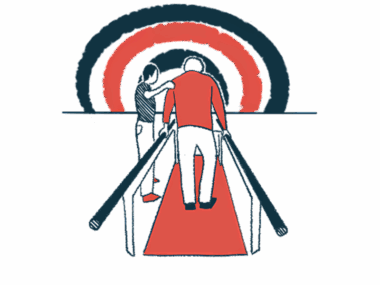Trial to Assess Adherence to PoNS Therapy for MS With at-Home Use
'Real-world' study of stimulator device plus physical therapy on walking, gait
Written by |

An upcoming observational clinical trial will assess how adherence to treatment with the portable neuromodulation stimulator (PoNS) device, used in the clinic and later at home, improves gait in people with multiple sclerosis (MS).
Sponsored by Helius Medical Technologies, the device’s developer, the open-label Therapeutic Experience Program (TEP) clinical trial (NCT05437276) study is expected to begin recruiting patients later this year at up 12 U.S. centers of excellence interested in adopting this therapy.
Between 50 and 60 adults with MS, ages 22 to 65, will be enrolled. All need to have some walking difficulties but be able to walk at least 10 meters (about 33 feet) without an aid. They also must be free from relapses for at least two months before enrolling.
Trial sites to date are New York University’s Langone Health, the Shepherd Center in Georgia, Oregon Health & Science University, and — most recently — Massachusetts General Hospital’s Institute of Health Professions, according to a company press release.
Two weeks of supervised PoNS therapy followed by 12 weeks of at-home use
“The purpose of our Therapeutic Experience Program is to gain insight about the functional outcome of PoNS therapy used with MS by treating patients in a real-world environment,” said Antonella Favit-Van Pelt, MD, PhD, Helius’ chief medical officer.
PoNS, a noninvasive portable device, is approved by the U.S. Food and Drug Administration (FDA) for use as a short-term treatment for adults who experience difficulty walking due to mild to moderate symptoms of MS.
Its availability on the U.S. market is for those ages 22 and older with a prescription from their healthcare provider. It is designed for use in combination with exercise programs under the supervision of a physical therapist.
The device consists of a mouthpiece connected by a cord to a control unit worn around the neck. When placed on the tongue, the mouthpiece delivers a light electrical stimulation to the trigeminal and facial nerves, two major cranial nerves in the tongue, sending electrical signals to the brain.
This stimulation aims to promote neuroplasticity, the process through which the brain adapts and re-wires itself in response to new experiences. In combination with physical therapy, the device is expected to strengthen the neural circuits needed for movement, increasing the benefits of physical rehabilitation.
Enrolled patients will undergo 14 weeks of PoNS therapy: an initial two weeks of the device’s use at a clinic during physical therapy sessions guided by a trained therapist, followed by 12 unsupervised weeks of devise use plus physical therapy at the home.
The trial’s main goal is to determine adherence to PoNS therapy — the combination of the device plus physical therapy — over the 12 weeks of at-home treatment, and how such adherence affects patient outcomes. Functional improvement will be evaluated by the dynamic gait index, a measure of the ability to walk with balance while responding to certain tasks.
Secondary goals will examine how adherence to PoNS therapy impacts other measures of gait and balance, as well as the clinical global impression of change.
Patients will be asked to return to the clinic six months after finishing the therapy to evaluate the maintenance of its effects. Some may be given a second 12-week course of PoNS therapy at a site investigator’s request, and the magnitude of improvements and degree of adherence in these people will also be evaluated.
“The majority of patients with MS develop progressive gait impairment, which can worsen over a lifetime, and participation in [the Therapeutic Experience Program] is an important step in evaluating how PoNS therapy can improve gait function and potentially address this treatment gap,” said Prue Plummer, PhD, a physiotherapist and professor in the department of physical therapy in the School of Health and Rehabilitation Sciences at Massachusetts General’s Institute of Health Professions.
“We are keenly interested in the ways injuries to the brain can affect a person’s ability to walk, and how neurological rehabilitation can help improve gait recovery,” Plummer added.






